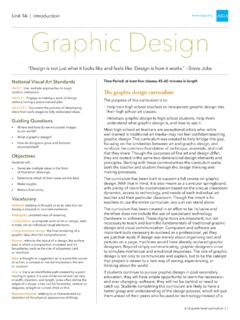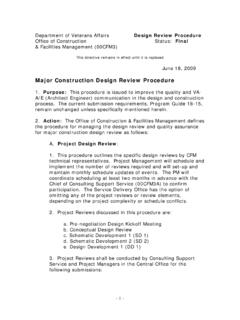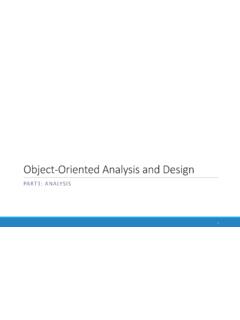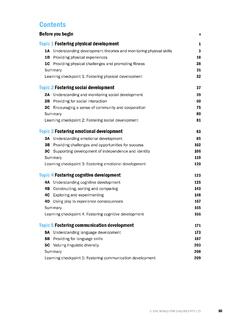Transcription of Universal Design for Learning: Cognitive Theory into Practice …
1 Forum on Public Policy Universal Design for Learning: Cognitive Theory into Practice for Facilitating Comprehension in Early Literacy Susan Trostle Brand, Professor of Early Childhood Education, University of Rhode Island Elizabeth M. Dalton, Director of Research and Development, TechACCESS of Rhode Island Abstract Addressing the unique needs of children of all ages and abilities, Universal Design for Learning (UDL) is gaining momentum in schools and preschools around the nation and the globe. This article explores Universal Design for Learning and its promising applications to a variety of reading and language arts experiences in the Early Childhood classroom. In UDL-infused classrooms, literacy experiences become multi-sensory and meaningful for young learners, thereby increasing their motivation and ultimate reading comprehension.
2 The four core principles of Universal Design for Learning--multiple means of representation, multiple means of engagement, multiple means of engagement, and multiple means of assessment are integrated into a sample literacy comprehension program designed to improve young children's text connections. The applications of UDL to enhancing children's reading and comprehension connections are demonstrated through the use of grand conversations, literacy circles, oral language experiences, creative dramatics, and play in teaching reading and language arts. This article illustrates how informed teachers may enlist a plethora of multiple intelligence and Cognitive Theory -based literacy strategies that promote automaticity and a life-long love of reading for young children.
3 Using stimulating and engaging text-to-text, text-to-self, and text-to-world connections, teachers and learners realize the rich implications of the four key principles of Universal Design for Learning. Introduction "If our teaching is to be an art, we need to know we can draw from all we know and believe and see in order to create something beautiful.". (Lucy Calkins, 2001, p. 6). Universal Design for learning is a teaching and learning approach that helps to ensure that high quality literacy and learning experiences are multi-dimensional, multi-sensory, satisfying, meaningful, and exciting for every child. Universal Design began as an architectural concept that involved planning the environment for optimal accessibility and productivity. Recently, it has become extended and infused into learner-centered classrooms, involving the carefully planned arrangements and applications of space, materials, curriculum, technology, and personnel.
4 " Universal Design is the Design of products and environments to be usable by all people, to the greatest extent possible, without the need for adaptation or specialized Design " (Mace, 1996). 1. Forum on Public Policy Universal Design for Learning (UDL) encourages the " Design of instructional materials and activities that allows learning goals to be attainable by individuals with wide differences in their abilities to see, hear, speak, move, read, write, understand English, attend, organize, engage, and remember without having to adapt the curriculum repeatedly to meet special needs (Orkwis, 1999). Universal Design for Learning involves the integration of initiatives. "The concept of UDL is the intersection where all of our initiatives integrated units, multi-sensory teaching, multiple intelligences, differentiated instruction, use of computers in schools, performance-based assessment, and others come together" (Palley, 2001).
5 Therefore, UDL is a method of teaching and learning that encompasses a wide variety of content areas while it is also simultaneously customized to meet the needs of all individuals. Founded in 1984 as the Center for Applied Special Technology CAST developed Universal Design for Learning as a means of expanding learning opportunities for all students. CAST is a nonprofit research and development organization that works to expand learning opportunities for all individuals, especially those with disabilities, through Universal Design for Learning. Its staff includes specialists in education research and policy, neuropsychology, clinical/school psychology, technology, engineering, curriculum development, K-12 professional development, and more. The four Core Principles of CAST1 are: Multiple Means of Representation (enlisting the knowledge network).
6 Multiple Means of Expression (enlisting the brain's affective network). Multiple Means of Engagement (enlisting the brain's strategic network). Multiple Means of Assessment (enlisting the brain's knowledge, affective, and strategic networks). Using the four principles of UDL, above, teachers of reading and language arts can conveniently and effectively integrate sensory-rich learning opportunities into their daily literacy teaching that enable young learners to make text connections and thereby increase their vocabulary and text comprehension. Comprehension, the ultimate goal of all reading, is facilitated by the application of Cognitive Principles (Bransford et al, 2005) Multiple Intelligence Theory (Gardner, 1983), and Universal Design for Learning (Orkwis, 1998).
7 According to Cognitive learning Theory , implicit learning plays an important role in language development and reading comprehension, beginning very early in life (Bransford et al, 2005). 1. (adapted and expanded by the UDL Task Force at Rhode Island College (RIC) and University of Rhode island, 2009). 2. Forum on Public Policy Implicit learning involves indirect, automatic processes that frequently lie beyond the conscious awareness of those who process the information. Patterns and strategies learned early, such as text-to-text, text-to-self, and text-to-world reading connections, are quite literally learned for life because, with Practice and experience, they are processed automatically and with high efficiency. In addition, researchers attest that the neural efficiency for certain well-practiced signals can allow for increased attention and creativity in other areas of learning (Bransford et al, 2005).
8 Teachers of young children who support implicit and automatic learning using Universal Design for Learning provide rich environments that provide numerous opportunities for social interaction, direct physical contact with the environment, and a changing set of objects for play and exploration. Gardner maintains that all human beings are born with a multiplicity of intelligences that, when developed by schools and society, promote the achievement of great individual accomplishments (Gardner, 1983). Literacy learning experiences that extend beyond paper, pencil, and book tasks, and that enlist learners' multiple intelligence areas, promote learners' active engagement, self-efficacy, and motivation (Rosenzweig, Bennett & Diamond, 1972). While enlisting UDL in their reading, children elaborate on the author's message, making text connections in creative and engaging ways that are personally relevant (Tompkins, 2008).
9 Moreover, learners extend the author's message by enlisting their schemata to make compare and contrast connections between community and world events and the texts they read. Through UDL-infused dramatizations and sensory experiences, making predictions about text content, identifying with protagonists, and using classmates' feedback in their writing and artwork to provide enough detail to allow others to make connections, children establish solid foundations for learning and comprehension. The four tenants of Universal Design for Learning are explored below, using the framework of a literacy curriculum that is designed to enhance all children's vocabulary and text comprehension. Specifically, Text-to-Text, Text-to-Self, and Text-to-World connections are exemplified and discussed using the foundation of Universal Design for Learning.
10 Literacy Instruction: Past and Present: Reading is an endeavor whose ultimate goal is meaning. It is meaning the story, the information and the ideas that make children want to read (Neuman & Roskos, 2005a). Developing meaning is closely related to children's prior knowledge, their interaction with related sensory experiences and materials, with their learning to read at their own pace, and in the way they learn best (Fields, Groth, and Spangler, 2008). "The goals of language and literacy are for children to expand their ability to communicate through speaking, listening, reading, and writing and to develop the ability and disposition to acquire knowledge through reading (BredeKamp & Copple, 1997). Social situations and 3. Forum on Public Policy meaningful contexts play a major role in children's acquisition of reading skills and in their making meaning from reading.

















